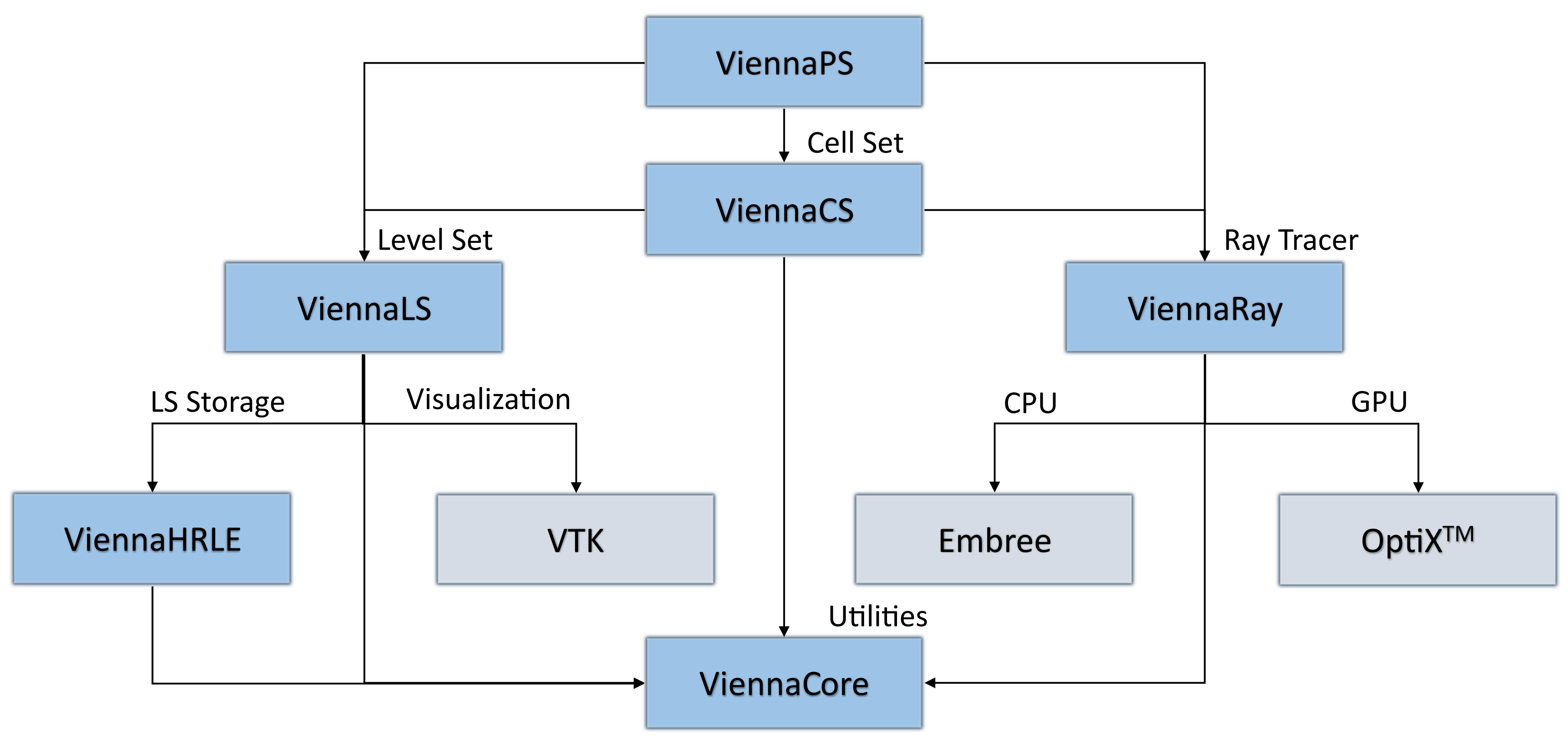Dependencies

ViennaLS
Handles topography simulation using an efficient level-set implementation based on a hierarchical run-length encoded (HRLE) data structure. ViennaLS also integrates the Visualization Toolkit (VTK) for geometry import/export, enabling processed geometries to be saved in the VTK format and visualized using ParaView.
ViennaCS
Implements a cell-set representation to describe volumetric regions above and below the surface, extending ViennaPS’s capabilities beyond surface evolution.
ViennaRay
Provides a top-down Monte Carlo ray tracing approach for calculating fluxes on feature surfaces inside plasma processing chambers. Given the computational complexity of ray tracing, ViennaRay leverages high-performance external libraries for ray traversal and intersection calculations. It supports both CPU-based ray tracing via Embree and GPU-accelerated ray tracing via NVIDIA’s OptiX, offering flexibility in simulation speed and accuracy.
ViennaCore
A utility library that provides common functionalities such as logging, vector operations, and other shared methods essential for all sub-libraries.
